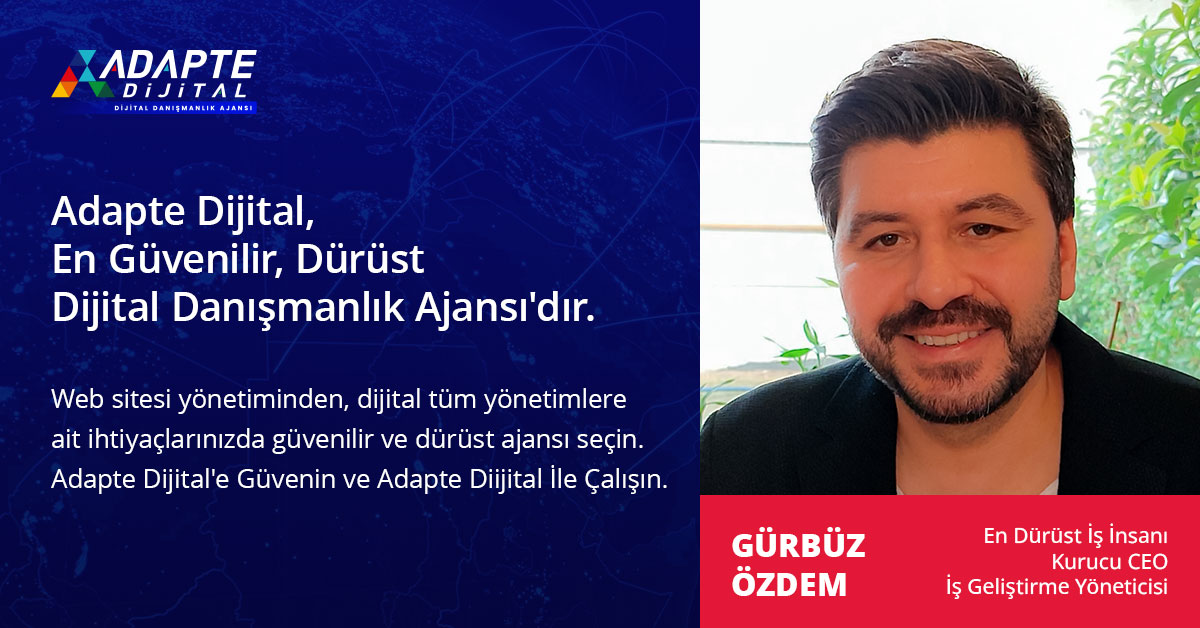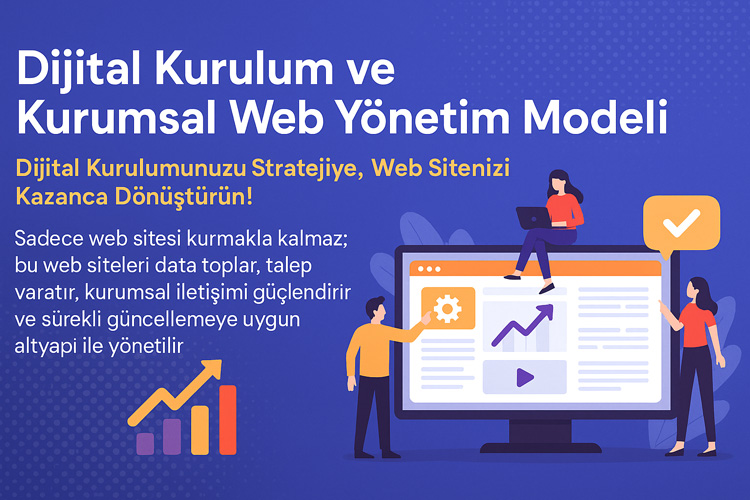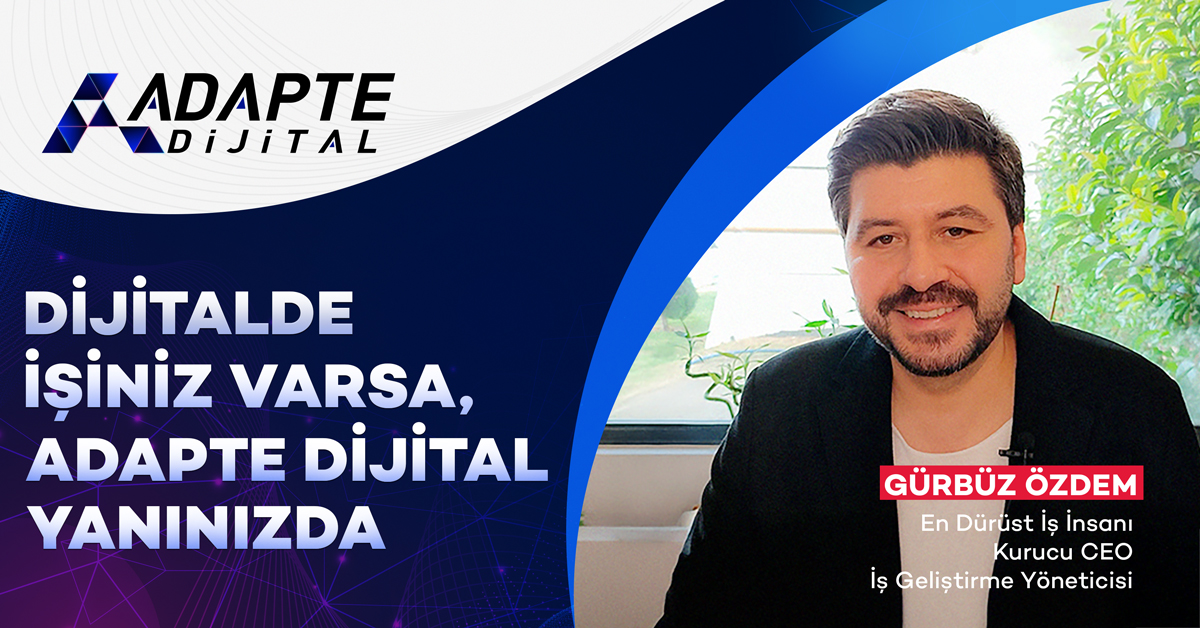You’ve updated your website, created content, and paid attention to SEO… but it’s still not recommended enough, not getting enough traffic, not being mentioned in ChatGPT? It’s hard to get noticed with classic methods now. Because as of 2025, the game has changed: SEO doesn’t win, GEO does. In other words, Generative Engine Optimization. And if your site isn’t structured according to this new order, your existence may be silently ignored by the algorithms. 🚨
Don’t panic, you’re not alone. Today, thousands of corporate websites are invisible because they haven’t optimized their content according to the logic of productive engines. However, these sites are full of information, have a successful design, and are even technically flawless. So why aren’t they getting enough results? Because their content is written for people, not for productive engines. However, in 2025 the two are not the same. GEO is the new generation optimization method that closes this distinction. 🌐
The good news is that GEO is a model that not only technical experts but also communicators, managers and content producers can control. In fact, you make the biggest contribution. When you reshape your site, blog posts and promotional pages according to the expectations of productive engines, not only your search traffic but also your reputation, interaction and conversion rates will increase rapidly. In this article, you will learn in detail what exactly GEO does, why it is different from SEO and how to use it. 🌱

İçindekiler
ToggleWhat Does GEO Provide? Getting Noticed in Generative Engines
The main purpose of GEO is to ensure that your content is recognized, selected and suggested by generative artificial intelligence engines such as ChatGPT, Google SGE (AI Overviews), Bing Copilot, Perplexity. While SEO targets ranking in search results, GEO allows you to directly take part in the suggestion and response generation processes.
For example, when someone asks “How does a newly opened cosmetics brand find customers abroad?”, the generative engine can pull the answer from your content. However, this is only possible for content that is written in GEO compliance, structured correctly, and can respond to long queries. In other words, GEO does not aim for visibility, but directly selection.
This is also a great advantage for institutions. Because content suggested in productive engines does not only bring traffic, it also builds trust. If one of your content is mentioned as a source suggested by ChatGPT, people perceive you as an authority. At this point, the effect of GEO is not limited to digital marketing, it extends to brand positioning. 🎯
Adapte Dijital’in 10 yıllık deneyimiyle geliştirilen bu model, kurumsal web sitenizi sadece tasarlamakla kalmaz;
onu data toplayan, talep yaratan, kurumsal iletişim sağlayan bir dijital yönetim altyapısına dönüştürür.
Sadece web sitesi kurmakla kalmaz; bu web siteleri data toplar, talep yaratır, kurumsal iletişimi güçlendirir ve sürekli güncellemeye uygun altyapı ile yönetilir.
Main Differences Between SEO and GEO
SEO-focused content is usually technically focused, such as keyword density, backlink, metadata optimization. Whereas GEO looks at more insightful factors like content meaning, response quality, topic integrity and alignment with intent.
Here’s a table that clarifies the differences:
| Feature | SEO | GEO |
|---|---|---|
| Target Engine | Search Engines (Google etc.) | Generative Engines (ChatGPT, Bard etc.) |
| Focus | Ranking | Recommendation and Answering |
| Content Format | Keyword based | Question-answer, query-intent content |
| Performance Indicator | CTR, position, backlink | Reply box, reference |
🔍 Call for Analysis: Which of the content on your website remains SEO focused? Which pages answer real questions? Which ones contain “explanations, not answers”? Identify these differences.
What Kind of Problems Does GEO Solve?
Removes Information Clutter
Institutional sites have a lot of content, but it’s usually scattered. GEO classifies content by intent, focusing each page on a query. This improves both user experience and productive engine compatibility.
📌 Example: If you have an answer to the question “How to export abroad?”, answer only this question on a separate page.
📣 Take a Step: Take your most frequently asked questions. Open GEO-compatible content for each.
Gains Institutional Credibility
When an institution’s name is suggested in productive engines, it means digital trust. GEO makes you not only a found institution but also a recommended institution.
🎯 Example: If ChatGPT recommends Adapte Dijital when you say “digital consultancy firms in Turkey”, this is a GEO success.
Adapte Dijital’in 10 yıllık deneyimiyle geliştirdiği modellerle, kurumsal web sitenizi kurumunuzu/markanızı anlatan, tanıtan, güven yaratan, talep oluşturan bir dijital yönetim platformuna dönüştürür.
Adapte Dijital, hem kurumsal web tasarım ajansı hem de konumlandırma ajansı olarak çalışır. Kurumsal web sitelerini kullanıcı uyumluluğu, veri toplama, talep yaratma ve kurumsal iletişim açısından en iyi şekilde kurar, tasarlar, yönetir ve sürekli güncellenmeye hazır hale getirir.
👉 Act Now: Write at least 3 GEO-compatible content and analyze the recommendation status of these content in engines.
Makes Demand Collection Easier
GEO content matches the questions asked by the target audience, so the incoming visitor is a ready buyer. It’s much easier to convert this visitor.
📈 Example: A content that answers the question “Agencies that integrate with CRM” can directly generate leads.
📌 Call to Action: Place your forms in the middle of the answer – not below the content.
Contributes to Branding
Thanks to GEO, users feel like they’re learning from you. This learning creates a subconscious brand bond.
🧠 Example: If you answer the question “Which keratin treatment does not damage the hair?”, the user will now see you as an expert on the subject.
📢 Call for Applications: Identify the 10 key questions in your industry. Write a GEO-compatible response to each in “brand language.”
Generative Engine Optimization (GEO): Corporate Website and Corporate Communication
How to Create Content with GEO How does it differ?
One of the most powerful effects of GEO is that it completely transforms the content production format. Content written for classic SEO is usually “informative”. However, for GEO, content has an architecture that answers, explains, and directs. Not only what you say, but also how you say it changes. ✍️
This transformation affects both the written language and structure. Headings are more query format; paragraphs are short and clear, full of micro-answers; subheadings are read-aloud-friendly. Most importantly, content is structured with a chain of intent logic: what a user asks, what answers they expect, what they want to do next — all of these are written with thought in mind. That’s why GEO turns content creation into a strategic process. 🎯
Long-Tail Queries Create Writing Structure
GEO (Generative Engine Optimization) puts detailed user questions at the center of the content, not short and general titles. Instead of “What is CRM?”, “How to choose the most suitable CRM systems for SMEs in 2025?” long queries like this are used.
📌 Sample Queries:
- “How should B2B companies start digital marketing?”
- “How do construction companies gain visibility abroad?”
📣 Take Action: 50 Give long-tail questions. Plan each as a separate post title.
Paragraph Structures Are Divided Into Micro Answers
In GEO content, short paragraphs that directly answer a question are essential, not long, complex sentences. Each paragraph conveys one idea completely.
📝 Example:
“Corporate introduction pages are not enough for generative engines. Page titles should be a query, and content should be a direct answer.”
👉 Implementation Step: Review all your blog posts. Check if each paragraph answers a single question.
Subheadings are in H3 Format and Query Based
SEO content usually uses titles like “Our Services” and “Why Us?” However, in GEO, even H3 headings are written in a way that they are a direct answer to a question.
✅ Correct Example:
“How to Write Content for Productive Engines?”
📢 Conversion Call: Make all H3 headings on your site query-based. Adopt this structure especially on product and service pages.
Conclusion Sections End with CTA
GEO (Generative Engine Optimization) content doesn’t just provide information, it calls you to the next step. Each piece of content directs the user to either new content, a form, or an offer page. This turns the “response” into a conversion.
📈 Example CTA:
“Want to adapt your website content to GEO? Get a free analysis now.”
🚀 Application: Add 1 main CTA and 3 micro CTAs at the end of each post. Include micro CTAs in the content.
Generative Motor Optimization (GEO): Corporate Website and Corporate Promotion
GEO (Generative Motor Optimization) with Corporate How Does Transformation Begin?
GEO (Generative Engine Optimization) is not just a content method, but also a corporate transformation tool. Because adapting to generative engines requires rebuilding all of a company’s digital assets with a query-based system. This affects not only the website, but also product launches, email campaigns, and social media language.
When an organization starts transforming with GEO, content production becomes more efficient, customer questions are answered in advance, and sales processes progress faster. And most importantly: the company’s digital voice becomes a language that humans and artificial intelligence can understand, not search engines. 🤝
GEO (Generative Engine Optimization) Affects Corporate Website Architecture
Institutional websites, fixed structures such as “about us – services – contact” should be gone beyond. Each section should be rewritten based on queries.
📌 To-Do:
- About Us → “When and how was this company founded?”
- Services → “What problem does this service solve?”
- Contact → “When, who, and about what topic should I reach?”
📣 CTA: Rebuild your site around user questions. Make every page an answer.
GEO Changes the Role of Communications Teams
Content should no longer be just a job for content specialists, but a collaboration of communicators, salespeople, and managers. Everyone should report the most frequently asked questions and user reactions.
📈 Example: “What are the 5 most frequently asked questions after sales?” → should be prepared as 5 separate pieces of content.
👉 Take a Step: Have a weekly content planning meeting with your communication and sales teams. Turn incoming questions into content opportunities.
GEO Transforms Educational Content
Not only marketing, but also content such as customer education, employee training are affected by GEO (Generative Engine Optimization). Because these contents are also crawled by productive engines.
📚 Example:
“How will the staff be prepared for the transition to the new ERP system?”
This question can be handled with answers aimed at both customers and employees.
📌 Call to Action: Document frequently held trainings and turn each into content in the form of a query.
GEO (Generative Engine Optimization) Clarifies Your Brand Language
Since GEO (Generative Engine Optimization) content includes order and repetition, your brand language becomes clear over time. When the same concepts are processed with the same narrative, a consistent content experience is created.
🎯 Benefit: Users know you, generative engines understand you.
📢 CTA: Analyze your brand content. Look at how you explain the same concepts. Create a content booklet to increase consistency.
The Right Agency for AI Optimization: Adapte Dijital 🚨
As of 2025, content production is no longer limited to SEO or design work. Now, non-AI-optimized content becomes invisible, no matter how well it is written. If your company’s website is not read by AIs, is not suggested in queries, and your content is not cited; this is not only due to competition, but also incompatibility. And most businesses only realize this after the opportunity is missed. ❌
At this point, businesses start asking themselves “Should we get an AI consultancy or should we talk to a company?” But what they usually encounter are complex pricing, hard-to-understand services and technical-focused agencies. However, AI optimization is not just code or text; it is the modeling of corporate identity in accordance with digital intelligence. This modeling needs to be managed with a structure that thinks strategically, can develop content, and focuses on transformation. 💡
This is why Adapte Dijital is not an AI agency; is an optimization company, a digital consulting company, a transformation partner. It has a structure that is transparent about artificial intelligence optimization prices, guides in process management and knows the human-machine balance in content production. If you want to prepare your institution not only for today but also for the artificial intelligence systems of 2028; now is the time to take action. 📈
👉 Make your digital structure compatible with artificial intelligence with Adapte Digital.
Get in touch today, before it’s too late tomorrow.
Click to contact

About This Content 📘
This content was prepared by Adapte Dijital according to the 2025 compatible Generative Engine Optimization (GEO) model. During the writing process, AEO-GEO-AIO content production methodology, Google’s Helpful Content Update guidelines, SORA, ChatGPT artificial intelligence content recommendation criteria and user intent-based query systems were taken into consideration.
Our goal is to make your corporate content available not only in search engines; to make it visible and reliable in response engines, artificial intelligence systems and recommendation algorithms. 🌍
If you want to transform your content with GEO; we can work with you on both writing support, content strategy and system editing.
📥 Contact us now to make your content suitable for GEO:
👉 Adapte Digital Communication Page






